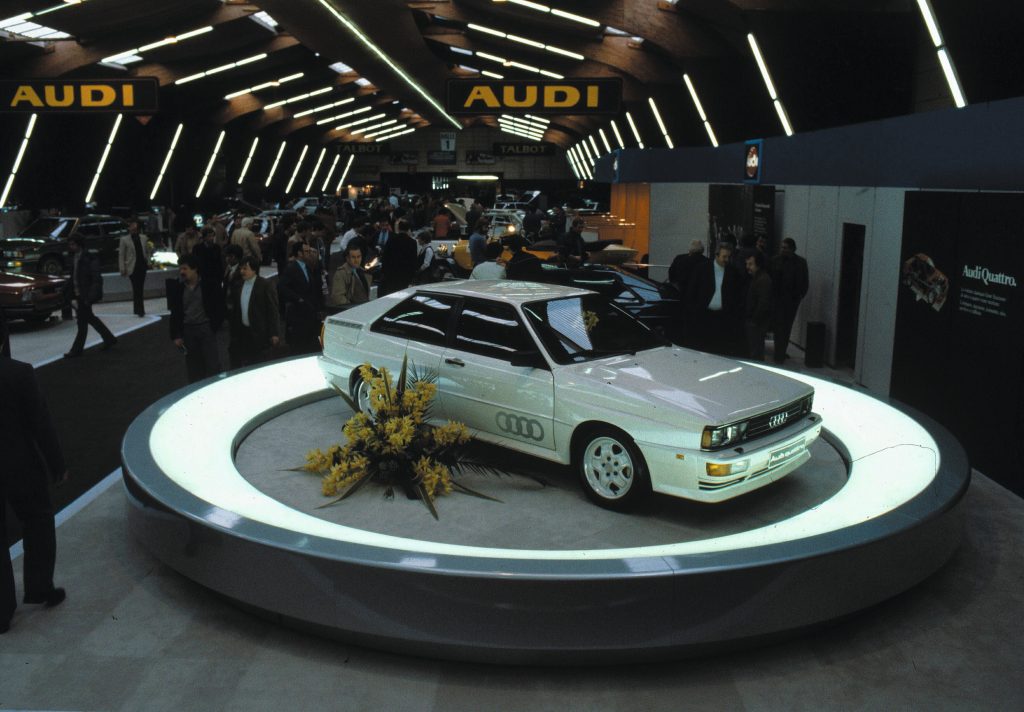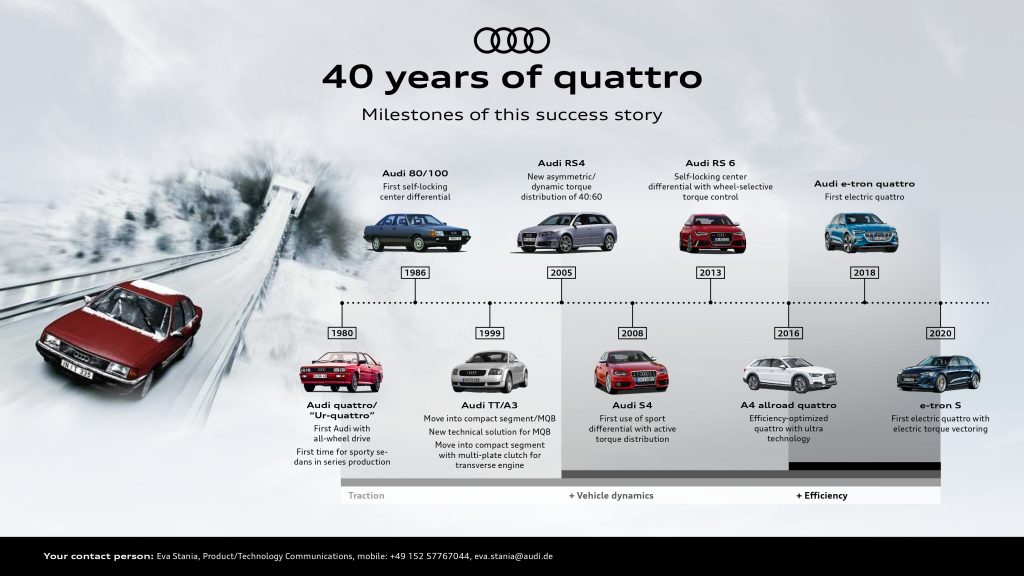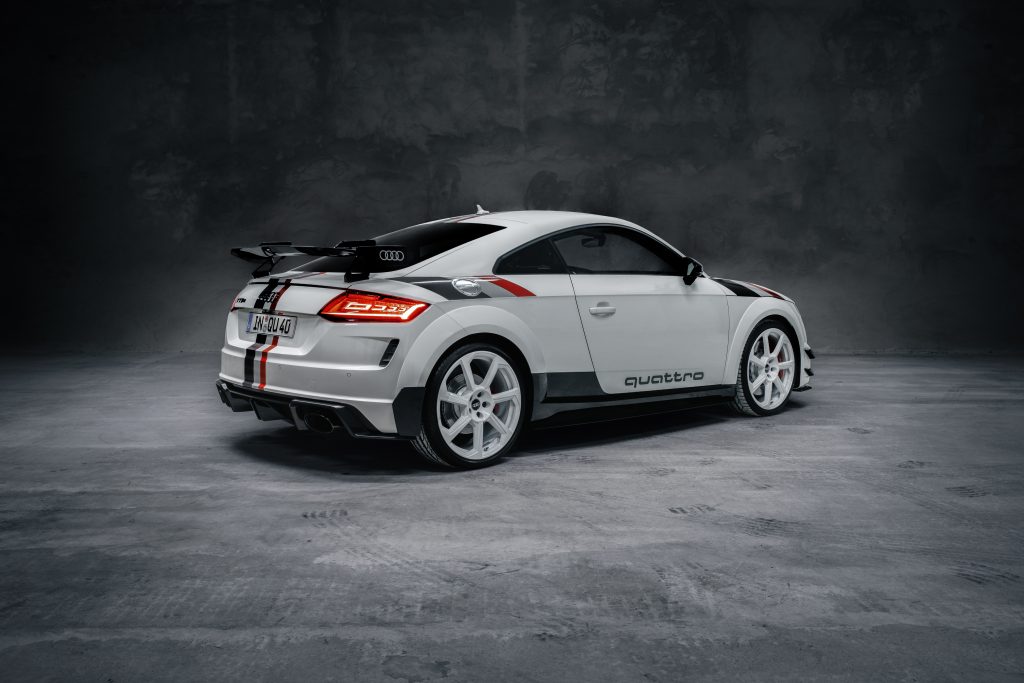“quattro” means “Audi,” and “Audi” often means “quattro.” This leading four-wheel drive technology has been a cornerstone of the brand for 40 years now—the original Audi Quattro model debuted at the Geneva Motor Show in 1980. Since then until September this year, Audi has produced 10,947,790 cars equipped with quattro all-wheel drive systems. At present, every Audi model line, except the compact A1, is available with cars that transfer horsepower to the road through all four wheels.
From the original quattro, which remained in Audi’s product range until 1991, among the subsequent significant developments of the technology were the “short” Sport quattro car of 1984, and the Audi 80 quattro introduced in 1986 whose all-wheel drive system could evenly split the engine’s torque between the front and rear axles, or, if needed, transfer up to 75% of this to the axle with better traction.

Audi continued to refine its quattro technology in the following years. In 1995 it launched the Audi A6 2.5 TDI, the first diesel passenger car with permanent all-wheel drive. In 1999, quattro technology in the form of an electro-hydraulic multi-plate clutch was introduced in the Audi A3 and TT model series. The next big step came in 2005 with the quattro featuring a center differential with asymmetric, dynamic 40:60 power distribution between the axles. When the original Audi R8 debuted in 2007, a viscous coupling appeared on the quattro front axle, followed a year later by a sport differential for the rear axle. In 2016, quattro with ultra technology joined the portfolio. Audi in 2019 released the electric-powered, all-wheel drive quattro to the market via the Audi e-tron.

Audi also dominated motor sports through quattro technology. The brand entered the World Rally Championship in 1981, and won the manufacturers’ championship in 1982, the drivers’ title in 1983 and both crowns in 1984. In 1987, Walter Rohrl, driving an Audi Sport S1, won the legendary Pikes Peak hill climb event.
When Audi shifted to racing touring cars, quattro technology allowed it to win the US Trans-Am championship in 1988, the DTM titles in 1990 and 1991, and seven national championships in 1996. Two years later, all-wheel drive systems were almost completely banned from European touring car races.
The Audi R18 e-tron quattro with a hybrid drive clinched three overall victories at the 24 Hours of Le Mans and two drivers’ and manufacturers’ titles in the World Endurance Championship.

To celebrate the quattro’s latest milestone, Audi is presenting 40 examples of the special-edition Audi TT RS 40 years of quattro. Coming in Alpine White decals honoring the livery of the S1 Rohrl drove in Pikes Peak, the car is also marked by a hood with central air vent in gloss carbon, an aero kit in gloss black with a fixed rear wing, special commemorative badges, and red brake calipers peeking behind white, 20-inch alloy wheels.
Some of the cabin items fitted to the TT RS 40 years of quattro are black Alcantara on the door trims and RS sport steering wheel, heritage stripes on the Alpine White inlay, RS sport seats embroidered with “40 years of quattro,” and a numbered badge on the S tronic gear selector.

Powering the TT RS 40 years of quattro is the five-cylinder 2.5 TFSI engine that produces 400ps and 480Nm of torque, and which is paired to a 7-speed S tronic transmission. Transferring the output to all four wheels is, of course, a permanent quattro system.
For more information, please call 0917 813 9064, 0917 806 2946, or 0917 935 4111.

